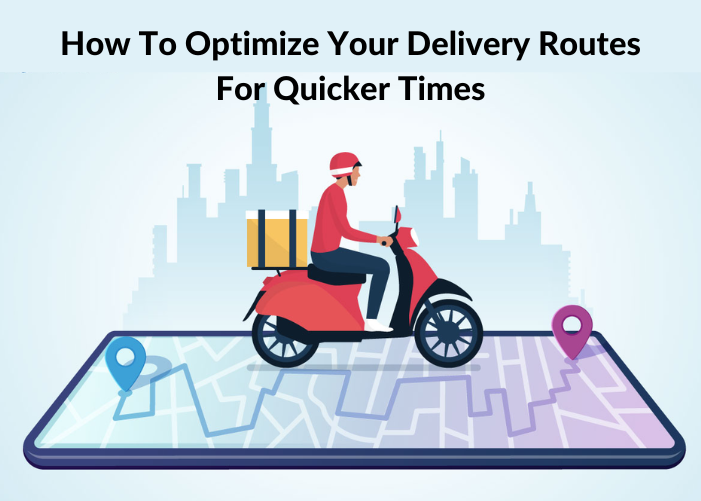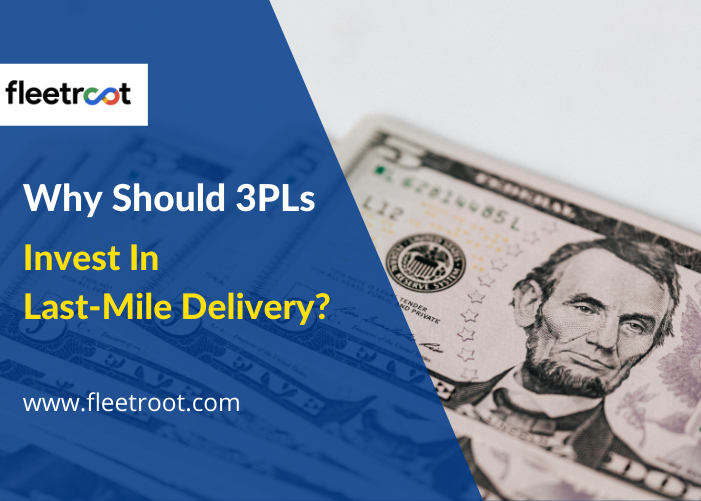1) What Is “route-optimization”?
As the term suggests, “route optimization” is the method of identifying the best route (most efficient, most cost-effective) between two points, arrived at after balancing out the numerous variables that affect delivery logistics and distribution.
Remember, though, that the “most optimal” route doesn’t mean the shortest, cheapest, or fastest route. It is the route that minimizes driving, maximizes the number of stops along a route, and minimizes operating costs by taking into account several factors that impact it, including:
- Customer’s delivery-windows
- Traffic and road conditions
- Driver availability and proximity
- Distance between two stops, number of stops along that route/region
- Vehicle and cargo type (weight, volume)
2) Why is route-optimization so important?
Route optimization is crucial to the success of a logistics and distribution company.
Given the number of factors that need balancing when arriving at the optimal routes – and the millions of possible solutions! – it would be pretty much an impossible task for us humans to achieve, especially in today’s highly complex, global, 24*7 delivery models. We just don’t have that kind of mental ability! Attempting to do so, would result in inflated costs due to spending inordinate amounts of time, booking excess vehicles, burning excess fuel (etc.)
The solution? The modern, automated, GPS and AI-enabled dispatch software.
With such route-optimization software, logistics teams can calculate the optimal route(s) in seconds. The software automatically balances out all the boundary conditions and restraints.
3) Top 5 ways that delivery software optimizes routes:
i) Visualizing the optimal delivery routes: By now, it must be pretty evident that traditional pen-n-paper solutions won’t cut it. Whereas, using GPS-enabled route-optimizer software, you can visually plot all the data points and boundary conditions on a map. This enables logistics teams (including drivers) to see the stops, traffic, and weather conditions, receive popup updates, and factor in emergencies (e.g., accidents)—all in real time!
ii) Automated dispatch: The automated software—enabled with AI, robust data-crunching abilities—allows logistics teams to set daily delivery goals based on boundary conditions and resources, including distances, stops, driver availability, (etc.). Once this data is fed in, the software automatically comes up with a driver-dispatch schedule, giving them detailed instructions on where to go, and how and when to do so.
Importantly, the best dispatch software will always allow human intervention at any point. That way, it creates the opportunity for the interjection of human knowledge to make any manual tweaks or adjustments as required.
Additionally, it also enables the driver to (electronically) collect proof of delivery on their cellphones, such as e-signatures, scanned documents, and barcodes.
iii) Reduced delivery times, and lower operating costs: The efficiency of dispatch software is high enough to actually shave off up to 40% of fuel consumption and driving times!
iv) Enhanced Customer Experience: Well, we live in an era of same-day and 24-hour deliveries! Customers are now ever more demanding—they expect cheap delivery costs, live updates on the progress of their parcels, and numerous payment and delivery options. If you don’t offer such benefits, they will go somewhere else—it really is as simple as that!
Using last mile delivery software ensures you are able to deliver across all these elements to achieve customer satisfaction. Driver-tracking, updates or changes to delivery windows (both, as requested by the customer or by the driver) via SMS or app notifications, communication with drivers and dispatchers, and ePOD are just some examples of modern-day benefits that customers now expect in order to be satisfied with their order-fulfillment experience.
v) Constantly raising the performance bar: An important thing to remember is that route optimization isn’t a one-off task. It is a forever ongoing and evolving process. As delivery companies gain experience, logistics technology evolves, and client-logistics firm relationships evolve, so does the process of route optimization, which is an ever-changing one.
Dispatch software has robust reporting and analytical capabilities. This results in insightful reports, that logistics teams can put to good use to improve future performance. Common metrics that are tracked for better future performance include:
- On-time delivery rates
- Delivery times
- Failure rates (and reasons thereof)
- Customer feedback
- Number of stops per route
- Idle time
The advanced dashboards of the software present the data in numerous ways for logistics managers to study. By driver, day, hour, product category (etc.). This deep, actionable insight helps transportation managers make informed decisions and continually improve their company’s performance.
4) Top hacks to improve your delivery times:
- Use a good App: Well, this is stating the obvious, isn’t it? Without a quality, robust App that has the scope to handle scale and complexity there’s no way you can establish an optimized delivery routine
- Take your time at the customer address: Don’t rush through the routine. That would result in errors like the wrong package, and missed checks-n-balances (e.g. forgetting to take the client’s e-signature upon delivery). Take a few extra minutes, check the SOP, and proceed accordingly
- Ensure the correct cargo is loaded: While this may seem a no-brainer, you must remember that fulfillment centers are often huge warehouses and a buzz of frenetic activity. There are, literally, thousands of transactions, deliveries, supply-chain activities, and tasks that are ongoing 24*7!
Under such a scenario, errors in loading the correct cartons or packages on the correct fleet vehicles could certainly occur. Therefore, establish an audit routine that double-checks or ensures the correct outbound goods have been loaded on the correct vehicle. Don’t keep your customer waiting any longer than necessary; despite modern communications, there will be times when your customer isn’t home!
In such cases, you could wait a few minutes but not any longer. Take the package back – someone else will deliver it the next day. Waiting excessively will throw a spanner in your remaining schedule. After all, you’ve adhered to your delivery promise and showed up during the delivery window
5. Be aware of where the parcels are inside your vehicle: That way, you know exactly where each parcel is and you don’t have to sift through the entire load when you arrive at the destination. Some apps have a feature called the fast-finder feature that tells you where – front, back, left, right (etc.) – in the vehicle the packages are
Conclusion: As is evident, there are several ways to constantly optimize your delivery routes as well as shorten your delivery times. In addition to the commonsense everyday hacks, it is most important to focus your route optimization techniques on tech-led tools such as delivery software.




